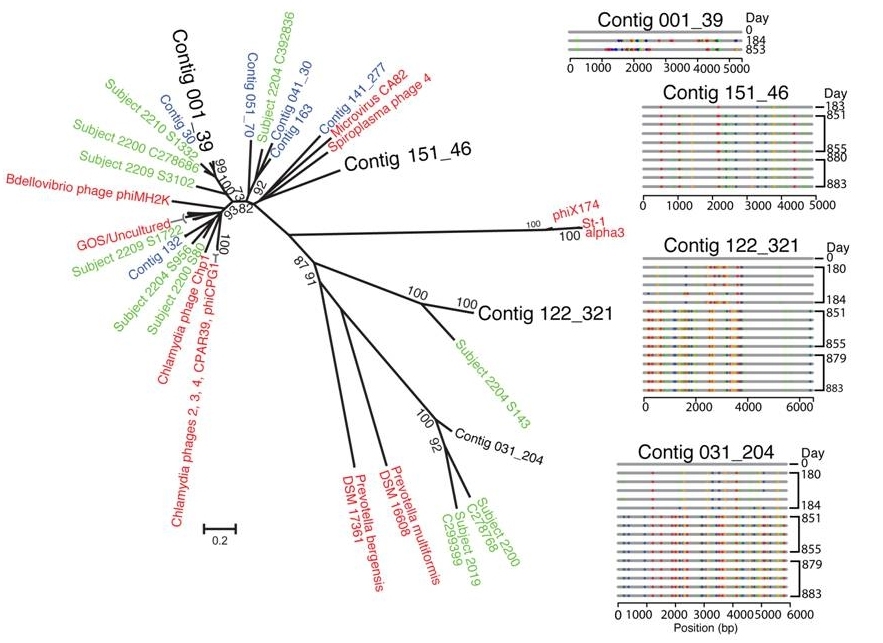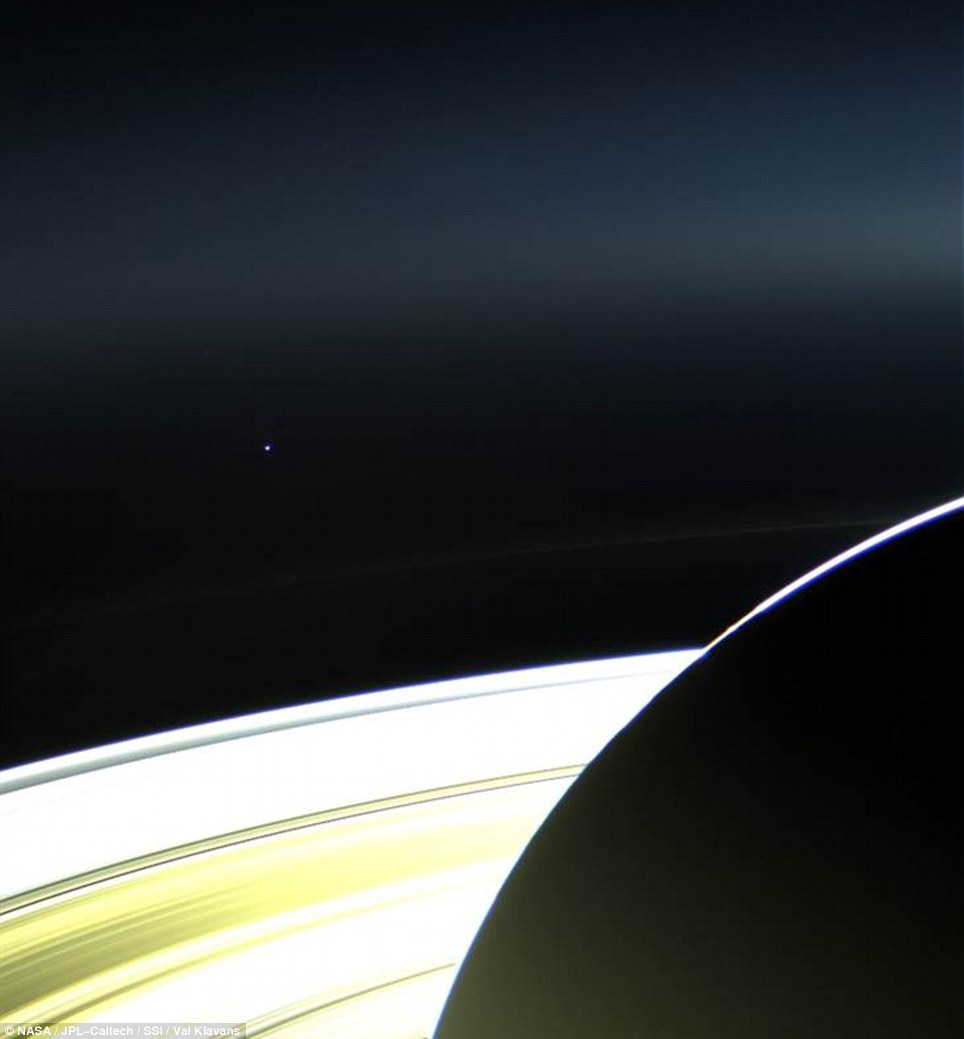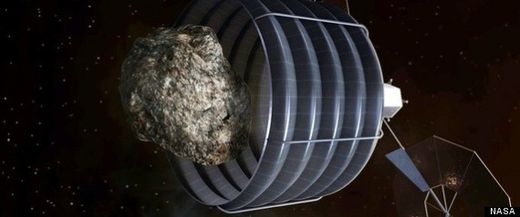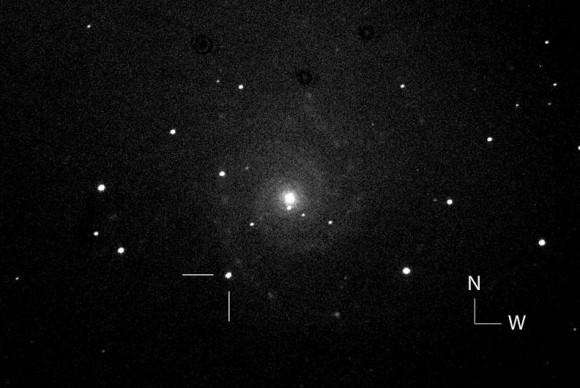
© Frederick Bushman, PhD, Perelman School of Medicine, University of Pennsylvania; PNASPhylogenetic tree of microphages detected in PNAS study and other studies. The four microphage contigs with the highest substitution rates observed in the PNAS study are shown in large black lettering. The scale bar indicates the proportion of amino acid substitutions within the 919 amino acid major coat protein, which was aligned to make the tree.
Humans are far more than merely the sum total of all the cells that form the organs and tissues. The digestive tract is also home to a vast colony of bacteria of all varieties, as well as the myriad viruses that prey upon them. Because the types of bacteria carried inside the body vary from person to person, so does this viral population, known as the virome.
By closely following and analyzing the virome of one individual over two-and-a-half years, researchers from the
Perelman School of Medicine at the University of Pennsylvania, led by professor of
MicrobiologyFrederic D. Bushman, Ph.D., have uncovered some important new insights on how a viral population can change and evolve - and why the virome of one person can vary so greatly from that of another. The evolution and variety of the virome can affect susceptibility and resistance to disease among individuals, along with variable effectiveness of drugs.
Their work was
published in the Proceedings of the National Academy of Sciences.
Most of the virome consists of bacteriophages, viruses that infect bacteria rather than directly attacking their human hosts. However, the changes that bacteriophages wreak upon bacteria can also ultimately affect humans.
"Bacterial viruses are predators on bacteria, so they mold their populations," says Bushman. "Bacterial viruses also transport genes for toxins, virulence factors that modify the phenotype of their bacterial host." In this way, an innocent, benign bacterium living inside the body can be transformed by an invading virus into a dangerous threat.



